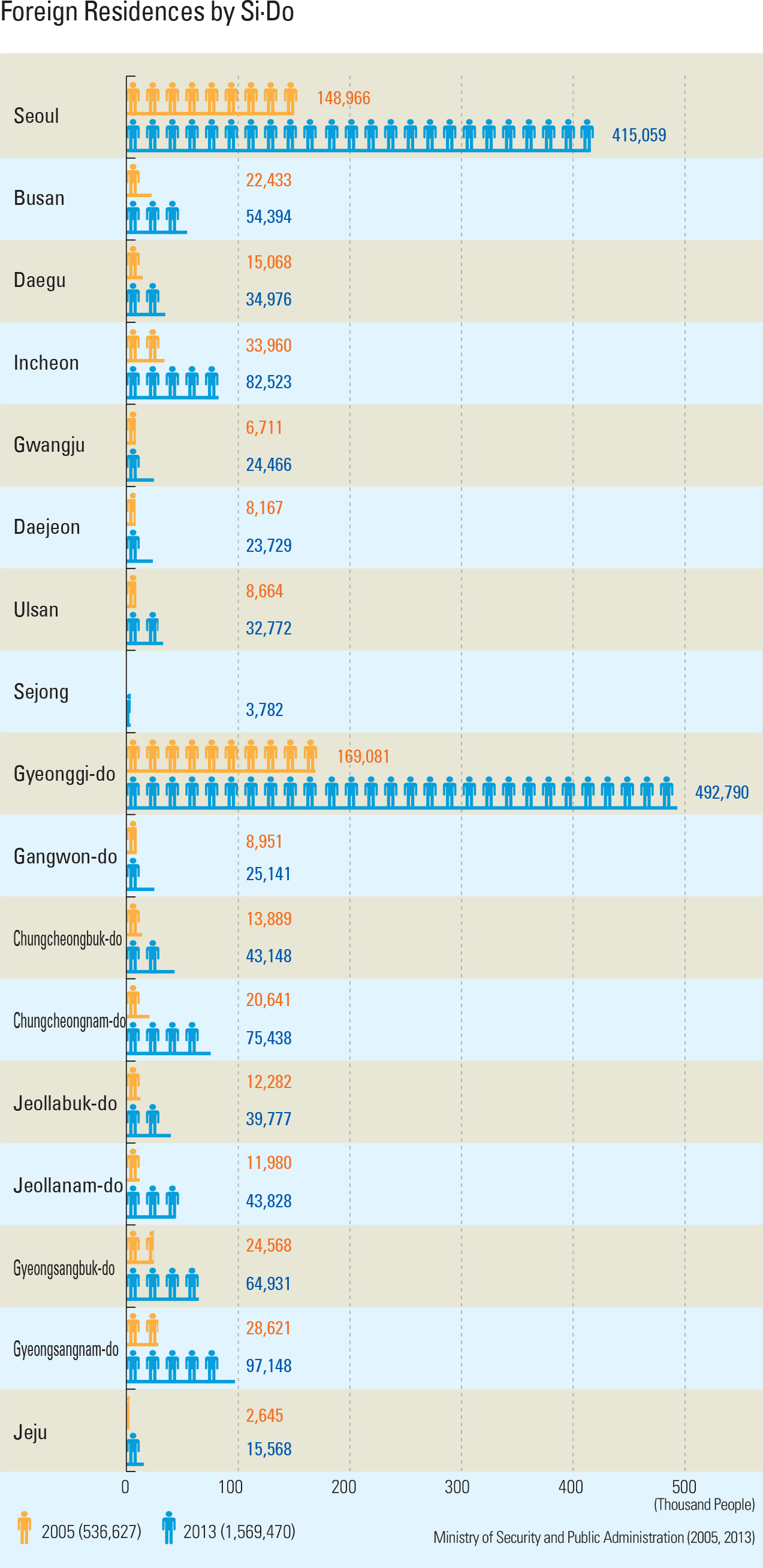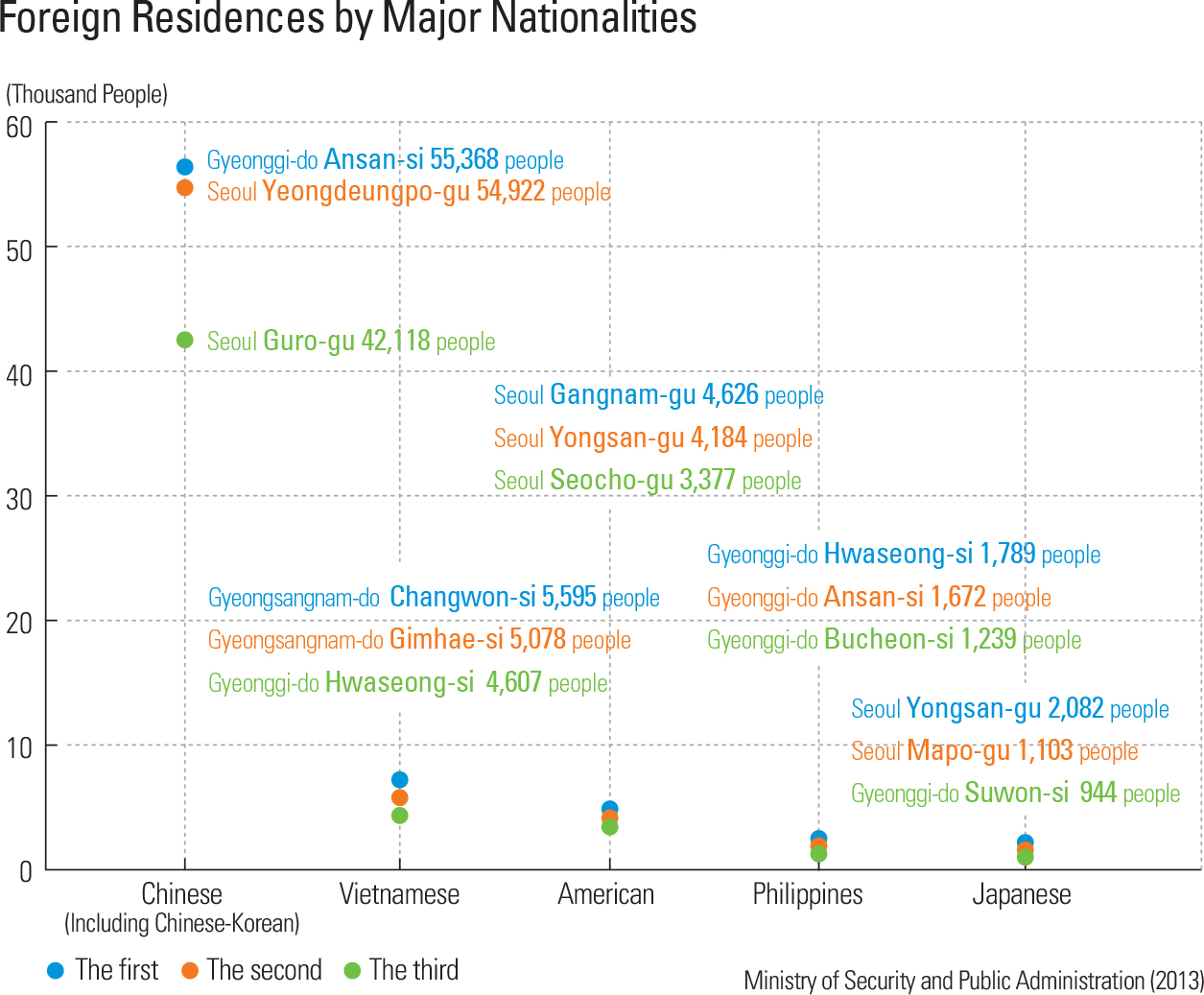English I
As shown on the map and in the graph in this section, the number of foreign residents has increased from about 530,000 in 2005 to about 1,570,000 in 2013, which almost triples the 2005 figure. In comparison with resident registration population during that same period, the number of foreign residents has increased from 1.1% to 3.1%. Many foreigners live in Seoul where the exchanges of goods and labor are active, or they live in Gyeonggi-do and Incheon where many factories are located. According to the 2013 figures, foreign residents are also found in Busan, Gyeongsangnam-do and Gyeongsangbukdo, and Chungcheongnam-do. Furthermore, several ethnically distinctive locations were established in Seoul, such as the Yongsan-gu, the Yeongdeungpogu, the Guro-gu, and the Geumcheon-gu. Statistically, the number of male and female foreigners in 2013 is estimated to about 810,000 and about 760,000, respectively. Although the difference between the male and female numbers is not large, there is some distinctive differentiation among nationalities. The numbers of female migrants from China, Vietnam, and the Philippines are significantly larger than the male migrants from the same countries. Ethnically, the Chinese or the Korean-Chinese represent the largest number of foreign residents, followed by the Vietnamese, the Americans, Filipinos, and the Japanese. The areas with high concentrations of foreign residents are shown on the graph The Present Condition of Foreign Residence by Major Nationalities. Many Chinese and Korean-Chinese citizens are living in Ansan-si, which is a central manufacturing region. Also, the Yeongdeungpo-gu and the Guro-gu has large concentration of Chinese and Korean-Chinese people. Many Vietnamese people live in Changwon-si, Gimhae-si, and Hwaseong-si. Many Filipinos live in Hwaseong-si, Ansan-si, and Bucheon-si. Many workers from Vietnam and the Philippines are working in factories in those cities, frequently forming multi-cultural families. The Gangnam-gu, the Yongsan-gu, and the Seocho-gu are home to a concentration of American residents, and a large number of Japanese are currently living in the Yongsan-gu.
|


